No one wakes up in the morning and decides, “I’m going to buy something today.” Instead, they go through a path to purchase that includes research and evaluation before committing to a sales call.
That journey is called the buyer’s journey. Because consumers are more informed and more empowered than ever before, it’s important to deeply understand your buyer persona and the journey they make so you can create content that helps them along that path while positioning you as an authority in your space.
In this post, we'll cover:
- Understanding the Buyer's Journey in Marketing
- What a Marketing Funnel Is
- Marketing Channels for Each Stage of the Funnel
- Creating Content for Each Stage of the Buyer's Journey
Understanding the Buyer’s Journey in Marketing
In most cases, with the exception of impulse buys, an individual begins their journey in an “unaware stage.” This individual likely fits the demographics of your ideal client (also known as your buyer persona), but they are not aware of your product or in need of it.
However, they may experience a triggering event that changes their situation or a pain that needs to be solved. This kicks off their buyer’s journey.
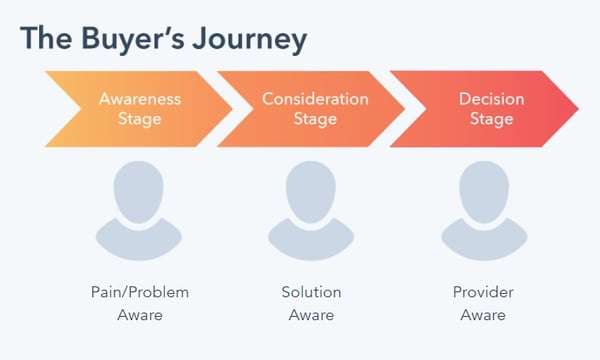
When you don't have a complete understanding your audience, a disconnect is created between your business and your potential customers. For content marketers, this usually means you're putting out content that your readers don't really relate with, which can cause you to lose them.
As is the case in all marketing disciplines, it’s important to understand your audience: how they think, the answers they seek, and the path they tend to take to find a solution. From that research, you can begin crafting a documented content strategy that maps your content to the various stages of the buyer's journey.
Developing the buyer’s journey for your business is the first step to creating content that resonates with your buyer and building out your marketing funnel so that you can meet them at each stage of their journey.
What Is a Marketing Funnel?
A marketing funnel — more commonly known as a sales funnel since its output is revenue — describes the different stages a customer goes through leading up to their purchase, from looking at your website for the first time and subscribing to your email list to reading your emails and talking to a sales associate.
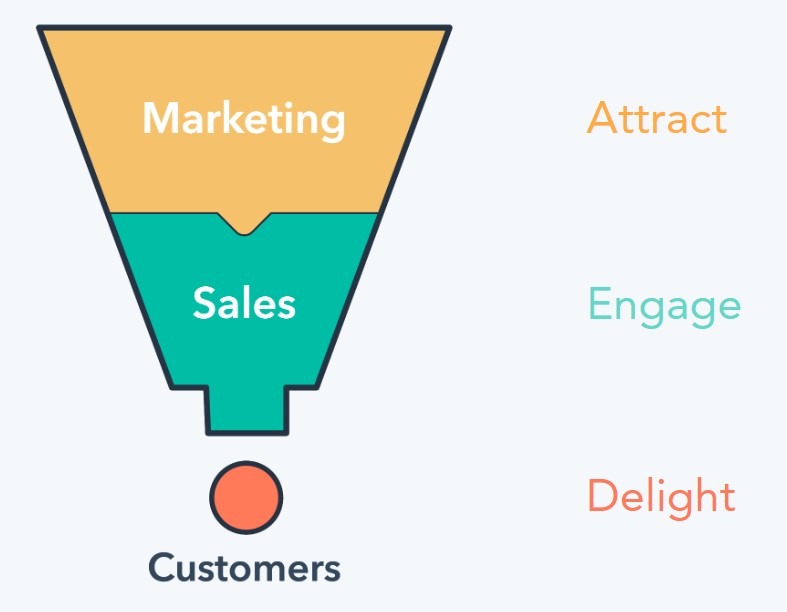
How the funnel works is simple. The top of the funnel indicates they are further away from a purchasing decision while those who make it to the bottom of the funnel are closer to a purchasing decision.
Often, it’s a marketer’s job to attract your buyer persona in the early stages of their journey and hand off qualified prospects to the sales team to engage them. Once they become a customer, your service team delights them so that they buy from you again and again and tell all their friends.
The funnel is a useful tool when used in the context of the buyer’s journey. However, keep in mind that the funnel has one issue: It puts customers as the output. At INBOUND 18, HubSpot officially retires the funnel in favor of the flywheel.
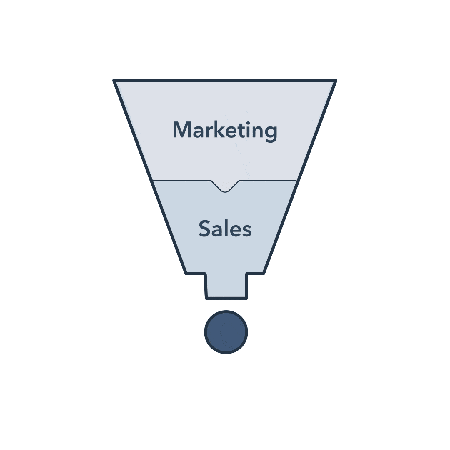 The result puts customers at the center, which creates a more unified and less linear approach to all your marketing, sales, and service activities.
The result puts customers at the center, which creates a more unified and less linear approach to all your marketing, sales, and service activities.
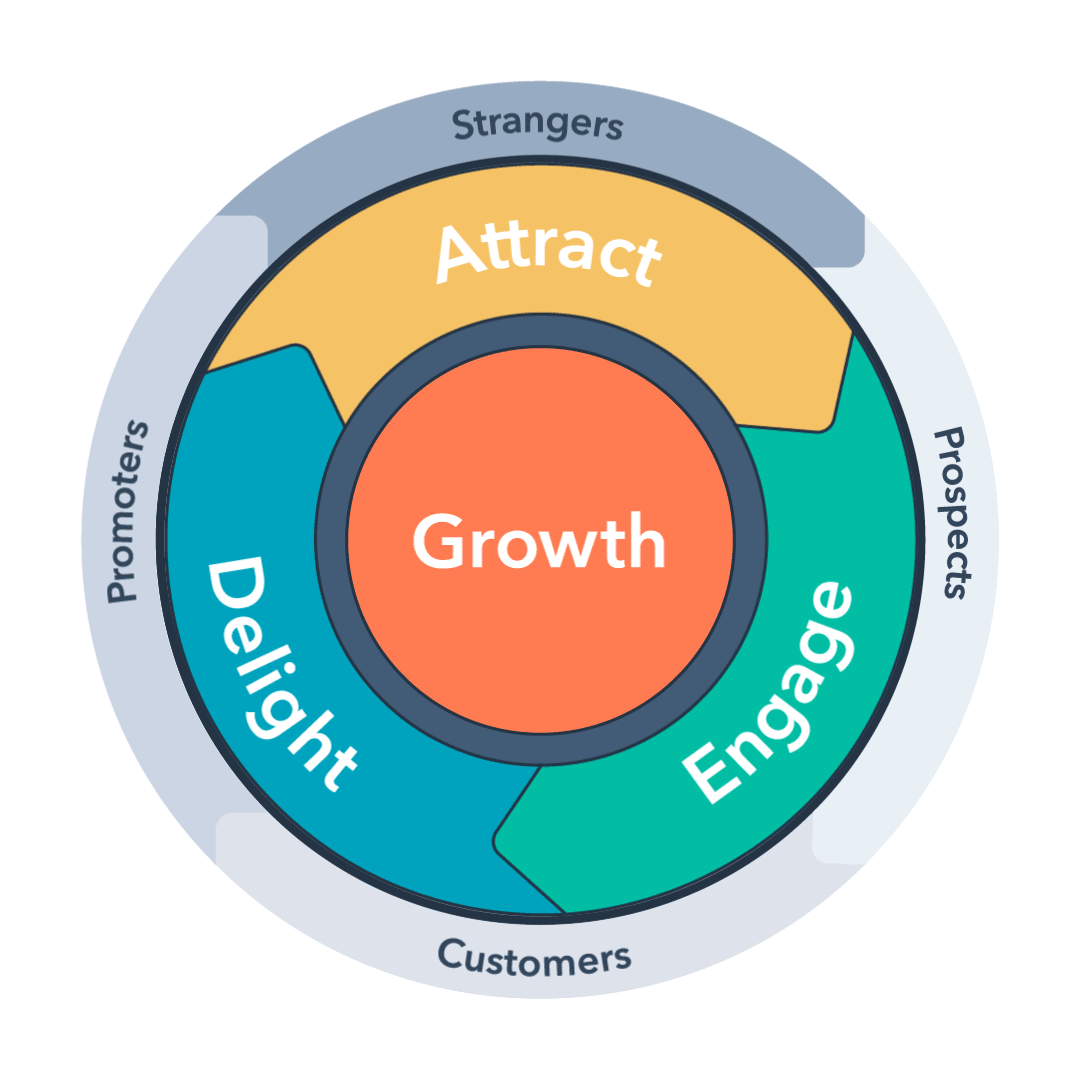
Marketing Funnel Stages
Even so, the funnel is still a good starting point before you begin moving to your flywheel strategy.
All you have to do take the buyer’s journey and ask the question: “How do we attract and engage this person so they become a customer?”
Whether you subscribe to the funnel or the flywheel methodology, earning business from your prospects comes down to three simple things:
- Attracting strangers
- Engaging prospects
- Delighting customers
As you create create content that performs these functions, you'll consider the stage they're at in their journey and the best channels to put the content in front of them.
The internet has made it easier for marketers (and salespeople) to engage customers at the various stages of their journey using content marketing. That’s one of the main reasons that 60% of marketers consider content as 'very important' or 'extremely important' to their overall strategy.
However, it can be challenging to create the right content, for the right people, at the right time.
Marketing Channels for Each Stage of the Funnel
Building a content strategy starts with identifying the channels in which you’ll reach your audience.
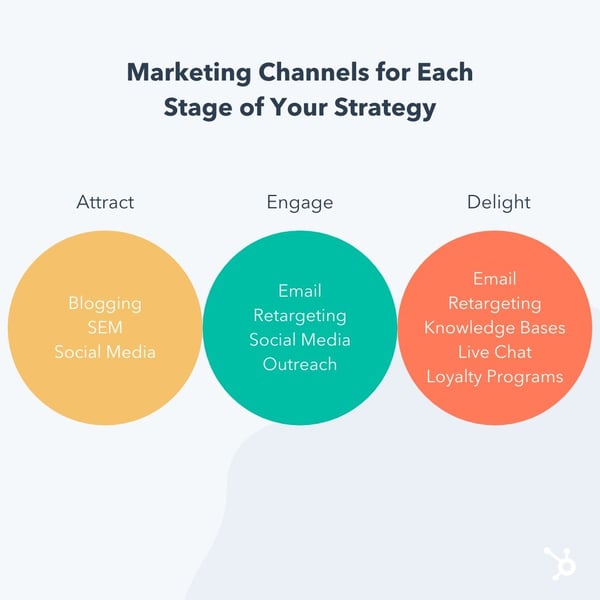
Marketing Channels for the Attract Stage
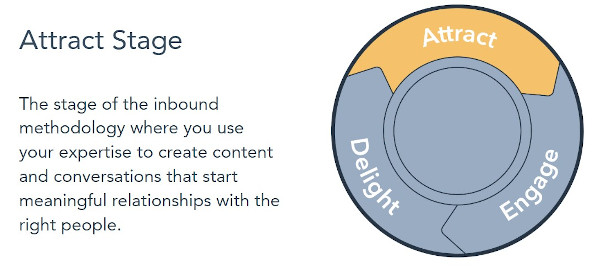 Remember, a large majority of your prospects may even be in the awareness stage of their buyer’s journey when you begin to attract them. That means your goal is to solve for their pains/problems by creating content they can easily discover and consume.
Remember, a large majority of your prospects may even be in the awareness stage of their buyer’s journey when you begin to attract them. That means your goal is to solve for their pains/problems by creating content they can easily discover and consume.
At this point, a buyer is trying to solve problems, get an answer, or meet a need. They’re looking for top-level educational content to help direct them to a solution, like blog posts, social content, and ebooks. Their value as a lead is low because there’s no guarantee that they’ll buy from you. But those who find your content helpful and interesting may journey on to the middle of the funnel.
The ideal channels for your attract stage may include:
- Blogging
- Search Engine Marketing
- Social Media Marketing
Marketing Channels for the Engage Stage
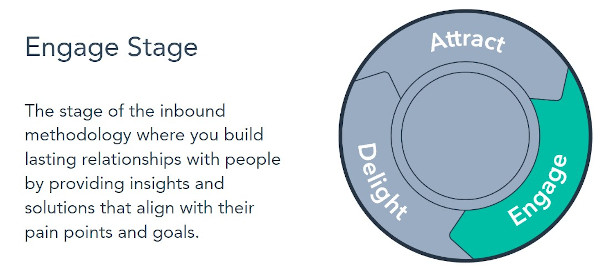
When someone moves into the middle of your funnel, it means you’ve captured their attention. They know they have a problem that has to be solved, and now they’re trying to discover the best solution. The need for a future purchase commitment creeps up as they’re evaluation their options.
While the top of the funnel is designed to educate a prospect, this is the stage where you want to show why your solutions in particular are the best fit.
(You also want to help people determine if they're not a good fit, which will be very important later for healthy customer retention. If you convince customers to buy who aren't a good fit for your business in the long run, you could be shooting yourself in the foot in the form of high churn rate later.)
The middle of the funnel is typically a point of extended engagement where you’re nurturing a lead, building a relationship, and establishing trust between the audience and your brand.
The ideal channels for your engage stage may include:
- Email Marketing
- Retargeting/Remarketing
- Social Media
You also need to engage prospects at the bottom of your funnel.
The bottom of the funnel is where someone is making the actual purchase decision. They're ready to buy, but that still doesn’t guarantee that they’re going to buy from you. That’s the last choice they have to make: Where do they get the solution they’re seeking?
In most cases, leads at the bottom of your funnel just need that final nudge and that compelling call-to-action to get them to make a purchase decision. The right offer and content at this stage can have a dramatic impact on lifting your conversions.
You might also consider sales outreach to engage qualified prospects and continue to engage them through personalization and contextual marketing.
Marketing Channels for the Delight Stage
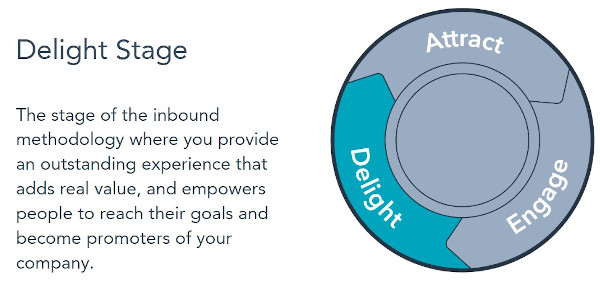
Marketing shouldn’t stop once someone becomes a customer. Cultivating a relationship with your customer beyond the sale can lead to higher customer lifetime value as well as word-of-mouth referrals and more.
The key here is to go above and beyond their expectations and provide a customer experience that’s easy and frictionless.
The ideal channels for your delight stage may include:
- Email Marketing
- Retargeting/Remarketing
- Self-Service Channels Such as Knowledge Bases
- Live Chat and Chatbots for Service
- Loyalty Programs
On the surface, this process seems really linear, but you can also target multiple stages of the buyer’s journey across channels.
For example, you may still be able to attract someone in the consideration stage or delight someone who isn’t a customer yet. Your knowledge base might convince someone in the consideration stage to buy since they perceive that you have great service, or someone in the awareness stage could engage your chatbot to find the content they need.
One of the joys of content marketing is thinking outside the box.
Creating Content for Each Stage of the Buyer's Journey
Once you have an idea of who your buyer persona is and what channels will work best for your business, you can begin creating content for your buyer at different stages and tailor that content per channel.
Doing so can help you map your content to the relevant stages of the buyer’s journey to make your funnel.
- Top of the Funnel: The "awareness" stage, where people looking for answers, resources, education, research data, opinions, and insight.
- Middle of the Funnel: The "evaluation" stage, where people are doing heavy research on whether or not your product or service is a good fit for them.
- Bottom of the Funnel: The "purchase" stage, where people are figuring out exactly what it would take to become a customer.
Your funnel may look very different depending on factors like your industry, business model, product, pricing, and audience. Some B2C customers, for example, spend very little time in the middle of the funnel compared to B2B customers that require far more nurturing, engagement, and relationship development before a purchase is made. A $50 pair of sneakers, for instance, requires a lot less handholding when it comes to making purchase decisions than a $10,000 business software investment.
Content Ideas for Each Stage of the Buyer's Journey
Because audiences can vary so widely based on industry and intent, persona research is of the utmost importance. Only by understanding their unique process for awareness and evaluation will you be able to create a truly effective content marketing strategy, packed with custom content that best supports their journey toward making a purchase.
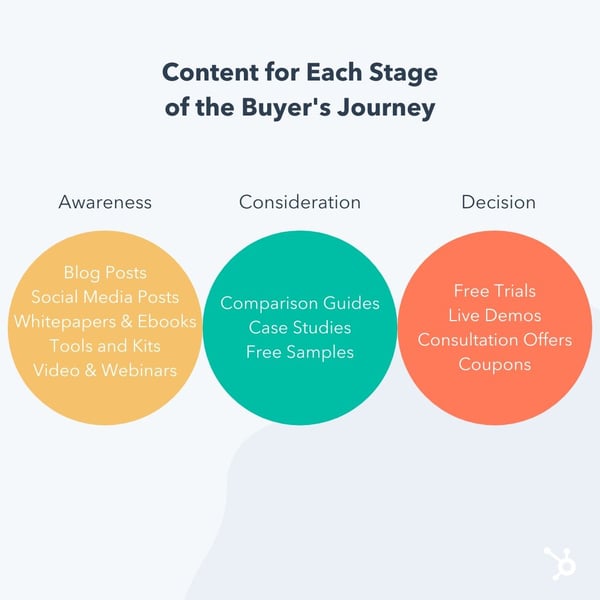
Blog Post
A blog post is an ideal piece of content targeting the awareness stage. By targeting a pain, problem, or other topic your target audience wants to discover and then posting it to your website, you’re creating a brand asset that’s crawlable by Google and discoverable by search engine users. You can also promote your blog content across other channels.
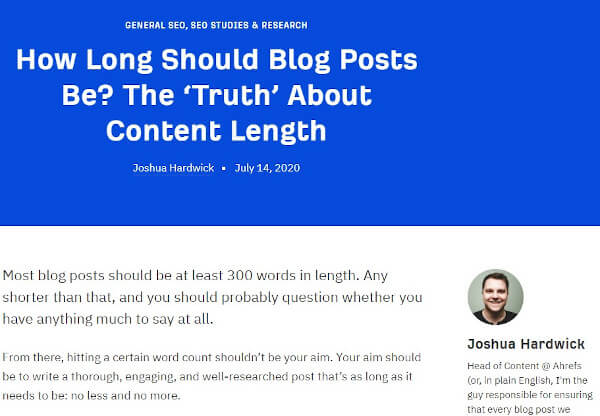
Ahrefs is a great example of a brand that does blog content right. They include original data and informational advice to create long-form articles that serve their audience.
Social Media Post
Social media is a channel that can be used to promote your other content, and you can also create content specifically for the channel. According to Pew Research, 72% of the public uses some form of social media, so it’s likely that your audience is native to this channel. Unlike blog posts, social media posts are likely shorter form, and video consumption is also on the rise.
In the above example, HubSpot Agency Partner Yokel Local shares attractive customer marketing tips on the LinkedIn platform. SlideShare formats are popular on LinkedIn, so the content is created to be snackable with short-form take-aways.
Whitepaper
A whitepaper is an organization’s report or guide on a particular topic. Whitepapers are especially useful as downloadable offers when a reader wants to go more in-depth on a particular subject they’re reading about. For whitepapers, it’s important to provide information that can’t be found elsewhere so that your audience understands the value of the report and is compelled to get it.
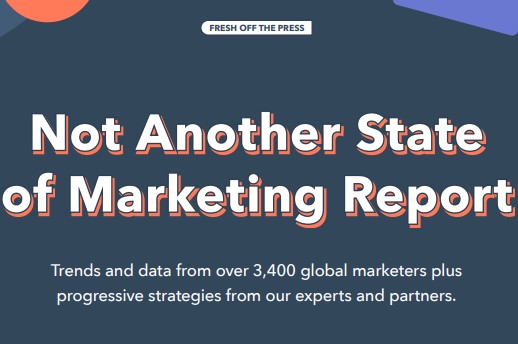
Every year, HubSpot publishes a survey on the state of marketing to provide helpful guidance based on thought leadership to marketers, sales professionals, and business owners. Inside, readers find statistics from a broad survey as well as industry experts’ opinions on what the data means and where the industry is going.
Checklist
For tasks that are complicated and have a lot of moving parts, individuals may simply want a blueprint that spells out what they’re supposed to do to achieve their end goal.
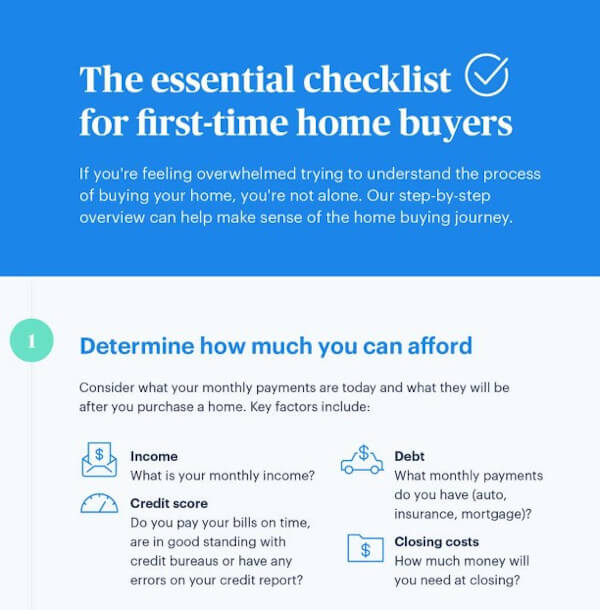
Buying a home is a perfect example of this, and Opendoor meets their audience’s need by providing a handy checklist (in infographic form!) for the reader that spells out all the steps that need to be taken. The graphic is aesthetically pleasing and even allows room for a few tips along the way.
How-To Video
Sometimes, the best way to solve a pain or problem is to learn a new skill. Sure, a purchase of some kind may be required along the way, but the audience may need to become more informed about the problem and how to solve it. That’s where instructional video content comes in.
Whiteboard Fridays is a popular video series by Moz where SEO principles are broken down to the audience in easy-to-understand language and visuals. Moz knows that SEO is a difficult subject and aims to make it accessible to their viewers.
Kit or Tool
Informational content provided to a broader audience may not always be enough for your buyer persona to make a decision or take action of some kind. In some cases, they may require a little more utility or personalization. That’s why kits and tools are a great piece of content to create to help the reader along their path to purchase.
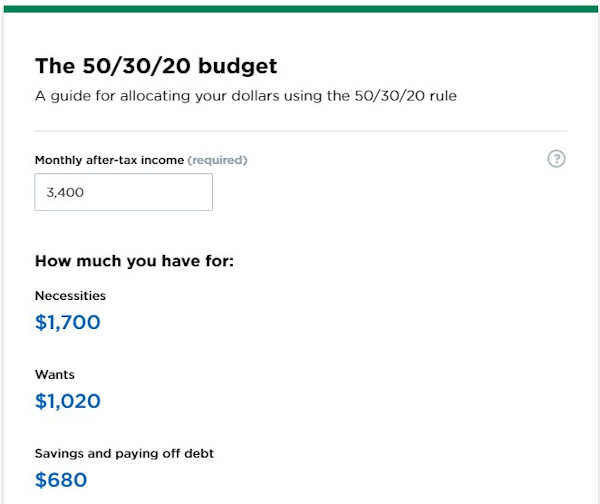
Nerdwallet creates content around several financial topics, budgeting being one of them. It can be difficult to create a budget, though, so they developed a calculator that allows the user to provide their own numbers in order to receive a customized recommendation.
Ebook or Tip Sheet
Similar to whitepapers, ebooks and tip sheets are great options for downloadable content. In contrast, they tend to be shorter form and more actionable.
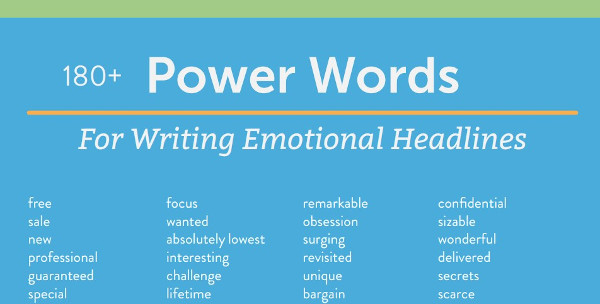
CoSchedule combines a few tactics by promoting their headline analyzer tool with a blog post about writing great headlines that drive traffic. On that blog post, they include a great tip sheet of powerful words to include in headlines if you want to catch a reader’s attention.
Educational Webinar
A webinar is a web seminar where information is typically provided through video. A webinar can be prerecorded or streamed live, and this opens up tons of possibilities to disseminate information to an audience who wants more visual and auditory content.
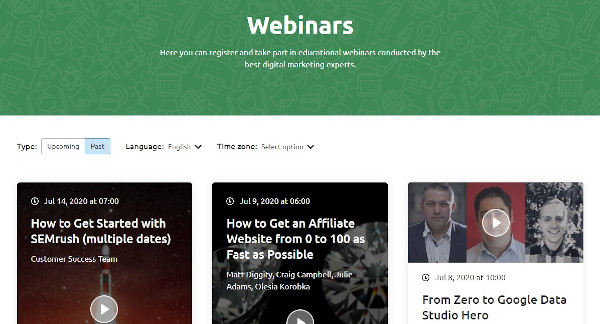
SEMrush makes webinars a key part of their content marketing strategy, often running a valuable topic multiple times to get more mileage out of the content.
Product Comparison Guides
In the consideration stage, the buyer persona is still considering solutions to their pain or problem. For this reason, product comparisons are a great way to help them make a decision.
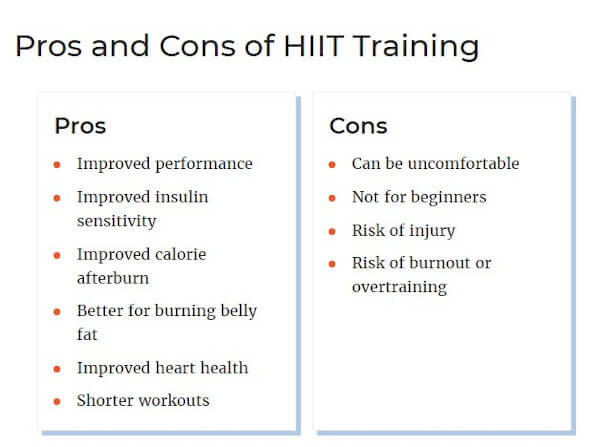
Verywell Fit provides such a comparison to help their readers choose between high-intensity workouts vs. steady-state cardio, providing the pros and cons and use cases for each.
Case Study
A case study can be used in both the consideration stage and the decision stage simultaneously by convincing the reader that the solution works by establishing that the provider achieves results for their clients by administering the solution. A good case study will appeal to the emotions and logic of the persona by providing detailed information and quantitative data on the final solution.
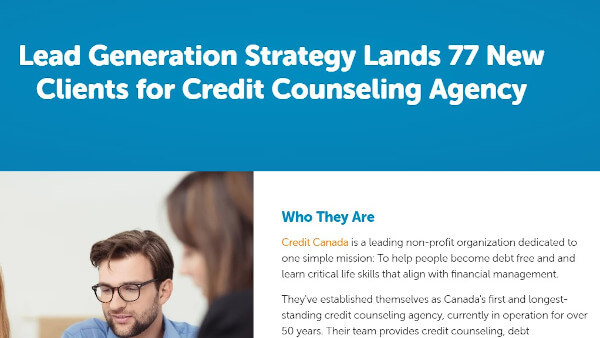
HubSpot Partner Agency Blueleadz does this by telling a story about their client and the problems they had while providing a detailed account of how they solved it.
Free Sample
A free sample is another example of content or an offer that overlaps between buyer’s journey stages. Consider this: An individual wants to paint the inside of their home, but they don’t know what color.
As they consider which color (the solution), they pick up paint chip cards from their hardware store. These cards are created by a provider based on their individual solution. When the individual falls in love with a color, they already know who the provider is that makes it.
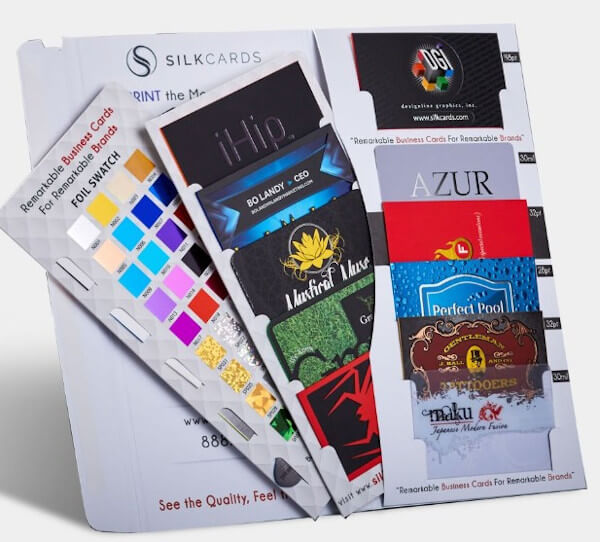
SILKCARDS taps into this buying behavior by offering samples of their unique printing methods on the content that they create. They know that their business is tactile, and digital content alone is not enough to close a deal. Once their prospective customer holds the sample in their hands, other business cards are put to shame.
Free Trial or Live Demo
What better way to know if you want to purchase a product than take it for a spin? Car dealerships have been using the “test drive” tactic for years because it works. If the product itself checks all the boxes the buyer has, all the sales team has to do is handle their objections and make the close.
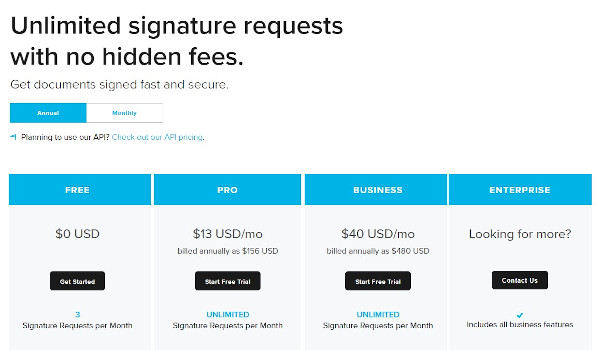
Hellosign does this well. Though they have a free option with limitations, they know that the key to getting clients into their larger tiers is by offering a free trial upfront. Their pricing page sets the prospect’s expectations and points them to the free trial.
Consultation Offer
A consultation is another example of providing just a little bit of service in exchange for the opportunity to close the sale. The best consultation offers reduce the anxiety of entering into a sales conversation by promising something concrete they can walk away with (a strategy or actionable advice) in exchange for their time.
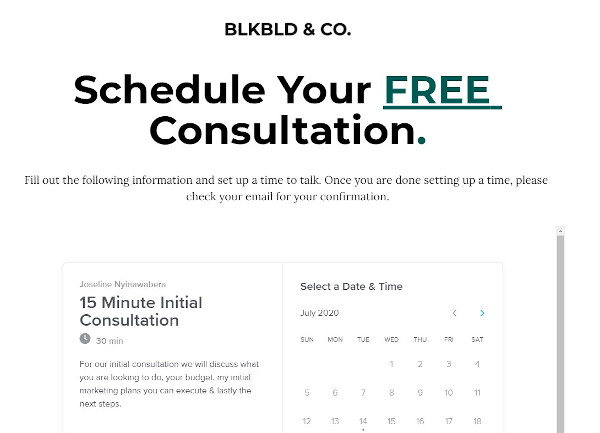
Blk Bld & Co.’s consultation offer is a great example because it reduces the friction of scheduling a consultation. By removing friction, this organization increases the chances of conversion.
Coupon
A coupon appeals to a fear of missing out (FOMO) mindset. By reducing the price by a certain amount, a coupon is handing a price objection while convincing the prospect that they’re leaving money on the table if they don’t use the coupon. This inertia enough to win the prospect’s business.
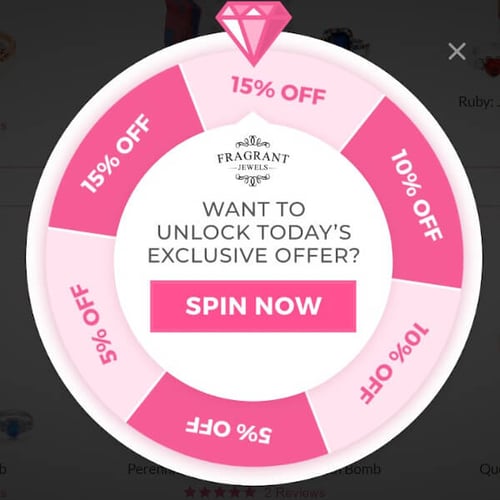
Fragrant Jewels does this well by gamifying their coupons. By spinning the wheel, the website visitors have the chance to get a coupon before checking out the products. They’ll likely be evaluating the products that are a good deal with the coupon they won.
In addition to decision stage content, you should also create content to delight your existing customers. This may include FAQ and knowledge base content to make the customer experience easier, coupons for the opportunity to upsell, and additional educative content that deepens their understanding of a topic.
Mapping Content Across All Stages of the Funnel and Buying Cycle
Every business has a unique sales funnel, sculpted and designed around their buyer’s unique journey. It’s a recipe that can’t necessarily be replicated from one business to another. When creating your own buyer's journey, there are a number of factors specific to your business to take into consideration.
That said, the general approach remains the same: Understand your audience, develop your funnel around your industry and audience intent, and create a documented content marketing strategy that maps custom content specifically to each phase of their journey through the funnel.
Do it well, and this process will have the greatest possible impact on your customer relationships, as well as the greatest possible lift in your overall conversions.
Editor's note: This post was originally published in August 2016 and has been updated for comprehensiveness.
No comments:
Post a Comment